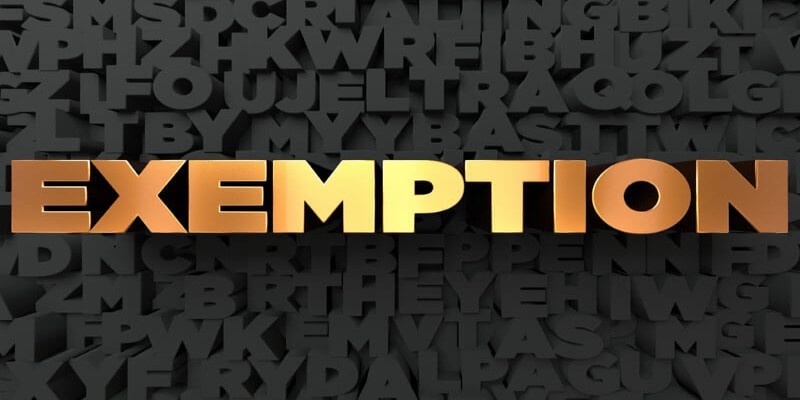The Mechanics of Sequestration: Limits, Exemptions, and Future Trends
What might sound to the ears as being a technical jargon term, sequestration "has profound implications for governments, economies, and daily life," much like those created by fiscal policy. Sequestration is simply a budgetary tool that keeps current spending in check. This is especially used when lawmakers get stuck at a stalemate on budget control. Though promising fiscal discipline, sequestration also produces the most sweeping effects on public services, government spending priorities, and economic stability. To understand sequestration, its nuances, and the exemptions that soften its blow, one must gain a good understanding of the role it plays in modern governance.

In this article, we’ll unpack sequestration, exploring how it operates, the types of sequestration that exist, and the limitations placed on this mechanism. Finally, we’ll delve into the future of sequestration to shed light on whether this controversial fiscal tool is here to stay or destined to evolve.
What is Sequestration and How Does It Work?
Sequestration refers to an automatic process of budget cuts triggered when government spending exceeds agreed-upon limits. It’s essentially a mechanism to enforce fiscal discipline by slashing expenditures across the board to curb deficits. The concept gained prominence in the U.S. with the Gramm-Rudman-Hollings Act of 1985, which introduced it as a safeguard against unchecked federal spending.
Here’s how it works: When lawmakers fail to meet pre-determined budget caps, sequestration kicks in, mandating uniform cuts across eligible government programs. This often leaves little room for discretion, applying cuts evenly to affected areas regardless of their importance or effectiveness. While the intent is to force policymakers to find common ground on fiscal issues, the indiscriminate nature of these cuts has led to widespread criticism.
A notable instance of sequestration occurred in 2013 during the Budget Control Act’s implementation, which aimed to reduce the federal deficit. Government spending reductions impacted everything from defense to public health programs, illustrating the broad reach and unintended consequences of this mechanism.
Types of Sequestration
Mandatory Sequestration
This type applies to entitlement programs and other automatic spending categories. Programs like Medicare or agricultural subsidies fall under this umbrella, with sequestration cutting a fixed percentage from their budgets when spending limits are breached. However, such cuts are often capped to prevent excessive harm to essential services.
Discretionary Sequestration

Discretionary sequestration targets appropriations decided by Congress annually, affecting programs like defense, education, and infrastructure. Since these expenditures are not mandated by law, the scope of cuts is typically broader, making discretionary sequestration a significant tool in deficit reduction.
Across-the-Board Sequestration
This occurs when cuts are applied uniformly across all eligible programs, regardless of their priority. While it simplifies implementation, the lack of flexibility can harm critical sectors disproportionately, raising concerns about its efficiency as a fiscal tool.
Each type of sequestration is designed to address specific budgetary challenges, but their effectiveness often depends on the political will to use them wisely.
Exemptions and Limitations
While sequestration is intended to enforce fiscal discipline, exemptions, and limitations exist to mitigate its impact on crucial services and vulnerable populations. Recognizing that not all programs can endure cuts without severe repercussions, policymakers have established safeguards.
Exemptions

Certain programs are shielded from sequestration to ensure public welfare and economic stability. Social Security, veterans’ benefits, and Medicaid are typically excluded from cuts, given their importance to millions of beneficiaries. Similarly, programs aimed at low-income families, such as food assistance and unemployment insurance, are often exempt to prevent exacerbating poverty.
Medicare, although not entirely exempt, has a cap on cuts, limited to 2% reductions. This ensures healthcare for seniors remains largely intact while still contributing to deficit reduction. Other exemptions include military personnel pay, which safeguards national security and morale.
Limitations
Even within programs subject to sequestration, there are legal caps on how much funding can be reduced. These limitations are designed to prevent destabilizing critical sectors, such as law enforcement or emergency services. Additionally, sequestration measures often exclude obligations related to debt interest payments, ensuring the government’s creditworthiness remains unaffected.
These exemptions and limitations highlight the delicate balancing act of sequestration: maintaining fiscal discipline without undermining essential services. However, critics argue that these safeguards often shift the burden of cuts to less protected areas, amplifying their impact.
Future of Sequestration
The future of sequestration remains uncertain as governments grapple with the competing demands of fiscal responsibility and public service obligations. While it has proven effective in enforcing budgetary discipline, its indiscriminate nature and potential to harm critical programs have fueled debates over its long-term viability.
One possibility is the reform of sequestration rules to allow more targeted and strategic cuts. Instead of across-the-board reductions, future policies may focus on evaluating programs based on efficiency and impact, ensuring that essential services are preserved while redundant expenditures are trimmed.
Another factor shaping sequestration’s future is the evolving political landscape. As governments face growing pressure to address challenges like climate change, healthcare, and infrastructure deficits, the rigidity of sequestration may conflict with these priorities. Policymakers may need to reconsider whether this blunt tool aligns with modern fiscal needs.
Finally, economic conditions will play a significant role. During periods of economic downturn, sequestration may become politically and socially untenable, prompting a shift toward alternative deficit reduction strategies, such as progressive taxation or public-private partnerships.
Whether sequestration evolves or fades into obsolescence, its legacy as a contentious yet pivotal fiscal mechanism will continue to shape discussions on government spending.
Conclusion
Sequestration is a significant yet controversial tool for enforcing fiscal discipline. While it helps control government spending, its broad and indiscriminate cuts often raise concerns about fairness and efficiency. By balancing exemptions for essential services with broader reductions, sequestration reflects the challenges of modern fiscal governance. As governments face evolving priorities and economic challenges, the future of sequestration remains uncertain, but its role in shaping budgetary policy is undeniable.












